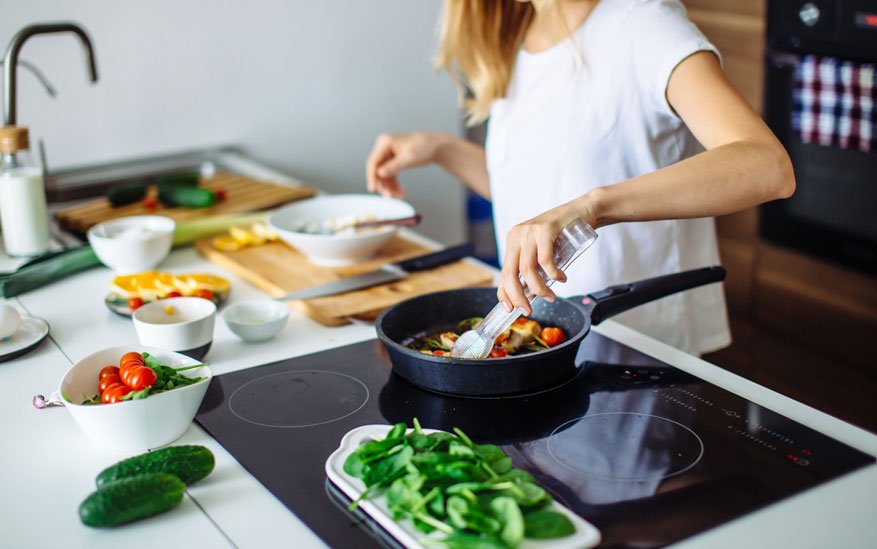How to Make Homemade Pasta: Tips and Tricks for Perfect Noodles
Pasta is cherished around the world for its versatility and universal appeal. The popularity of homemade pasta has grown steadily in recent years, thanks to its superior texture and rich, authentic flavor. While store-bought pasta is convenient, nothing quite compares to the experience of cooking and enjoying freshly made pasta. This step-by-step guide will equip you with valuable insights and techniques for crafting perfect homemade pasta.
From spaghetti and ravioli to fettucine and lasagne, pasta is the foundation for countless beloved dishes across cuisines. The magic of homemade pasta lies in its tender yet toothsome texture and its ability to absorb and hold onto sauces beautifully. Kneading and shaping pasta dough is also a relaxing, rewarding hands-on process. With the right ingredients and some basic equipment, anyone can become a pasta master.
This post will cover everything from understanding ingredients to rolling and cutting techniques. You’ll find tips for cooking and storing fresh pasta along with troubleshooting advice. Let’s dive in and learn how to take ordinary meals from average to extraordinary with homemade noodles.
Understanding the Ingredients
Great pasta starts with quality ingredients. The two essential components are flour and eggs.
Flour
For optimal texture and absorbency, you’ll want to use finely milled Tipo “00” flour, which is ground from soft wheat. This Italian flour yields a tender pasta with just the right amount of bite. The lower protein content allows the dough to extrude smoothly through rollers and cutters. All-purpose flour can work if necessary but tends to make stodgier, less pliable dough.
Eggs
Eggs give pasta its rich yellow color and tender texture. Larger eggs work best. For 1 cup of flour, use 1 large egg or 2 smaller eggs. Egg yolks alone can be used for even richer flavor and color.
Ingredient Substitutions
For gluten-free pasta, try a 1:1 blend of brown rice flour and tapioca flour combined with 2 eggs per cup of flour. Chickpea flour is another gluten-free option.
Vegan pasta can be made by replacing the eggs with 1 tablespoon of olive oil per egg. Adding spinach or beet puree helps mimic the color from egg yolks.
Essential Equipment
Pasta can be handmade without gadgets, but having a few specialized tools makes the process easier and more consistent:
- Stand mixer: Makes kneading effortless and hands-free. The paddle attachment works best.
- Rolling pin: Roll dough to an even thinness. Marble and wooden pins work equally well.
- Pasta machine: Rolls dough through progressively thinner settings for perfect thickness every time.
- Pasta cutters: Transform sheets into spaghetti, linguine, fettuccini, pappardelle and other shapes.
- Drying racks: Lets fresh pasta air dry evenly before cooking or storing.
Step-by-Step Pasta Making
Once you understand the fundamentals, it’s time to get hands on. Follow these steps and you’ll be churning out perfect pasta in no time:
Mix the dough
- Create a mound of flour on a clean surface and make a well in the center. This helps prevent mess and makes it easy to incorporate the eggs.
- Crack eggs into the well then beat them lightly with a fork.
- Use a fork to gradually draw some of the flour from the inner walls into the eggs.
- When it becomes too thick to mix with a fork, start bringing the sides together and kneading with your hands.
- Knead for about 10 minutes until the dough is smooth, elastic, and only slightly sticky. Add additional flour sparingly if it remains very sticky.
Let dough rest
- Shape dough into a ball and wrap in plastic wrap or place in an airtight container. Let rest at room temperature for 30 minutes. This allows the gluten to relax for easier rolling.
Roll out the dough
- Cut the dough into 4 to 6 pieces for easier handling. Keep unused dough covered while working.
- Flour dough pieces lightly to prevent sticking to the rolling pin and work surface.
- Begin rolling from the center outward, rotating the dough 90 degrees after each pass to maintain an even circular shape.
- Roll to about 1/16 inch thickness for long pasta and 1/8 inch for stuffed pasta. Thinner dough may tear during cutting.
Cut into shapes
- For long noodles, flour dough then loosely roll into a cylinder. Use a sharp knife to slice pieces to desired thickness. Unroll noodles and spread out flat.
- For filled pasta, roll out bottom sheet then place teaspoon-sized mounds of filling evenly across dough. Top with second sheet and press around fillings. Use cutters to form shapes. Ravioli and tortellini work well for beginners.
- Sprinkle pasta shapes lightly with flour or semolina to prevent sticking. Set out to air dry for 30 minutes before cooking or storing.
Cooking and Storing Fresh Pasta
Fresh pasta cooks very quickly, so have your sauce heated and ready before adding noodles. Here are tips for cooking and storing homemade pasta:
- Use 4 to 6 quarts of salted water per pound of pasta. Bring to a rolling boil before adding noodles.
- Cook pasta for just 1 to 3 minutes until al dente, tender yet still firm to bite. Drain immediately to prevent overcooking.
- Toss cooked pasta with a bit of oil or sauce to prevent noodles from sticking together.
- For storage, lay pasta in a single layer on a drying rack or parchment paper until hard and dry to the touch. This takes 12-24 hours.
- Place dried pasta in an airtight container and store for up to 2 months at room temperature.
- Uncooked pasta can be frozen for 1-2 months. Place in a single layer on a tray or sheet pan and freeze solid before transferring to a freezer bag.
Tips and Tricks for Perfect Noodles
With practice, you’ll pick up helpful nuances for efficiency and pasta perfection:
- Only knead dough as long as needed to pass the “windowpane test.” Stretch a small piece of dough until thin enough to see light through it without tearing. Stop kneading once this can be achieved.
- Use semolina flour when dusting to prevent sticking. It adds texture and won’t make pasta gummy like all-purpose flour can.
- Chill ravioli or tortellini dough after cutting but before cooking for firmer, easier to handle pasta.
- Don’t cut pasta shapes too small. They will continue to shrink slightly when cooked.
- Let sauce cling to noodles for a minute or two after mixing to allow flavors to permeate.
- Don’t rinse pasta after cooking. Drain immediately and sauce while hot for the best texture.
Be adventurous with shapes and flavors. The possibilities are endless once you master the basics. Nothing impresses quite like a homemade pasta meal.
Conclusion
We’ve covered all the essentials, from critical ingredients to kneading techniques, rolling methods and cutting styles. With the simple guidance, you can now craft superior homemade pasta for all your Italian favorites and creative new dishes. Remember to use high-quality ingredients, handle dough gently, allow resting time, and follow the proper order of steps. Don’t be afraid to experiment and find your own style. Homemade pasta is satisfying, cost-effective and lets you take your culinary skills to new levels. Mangia!





